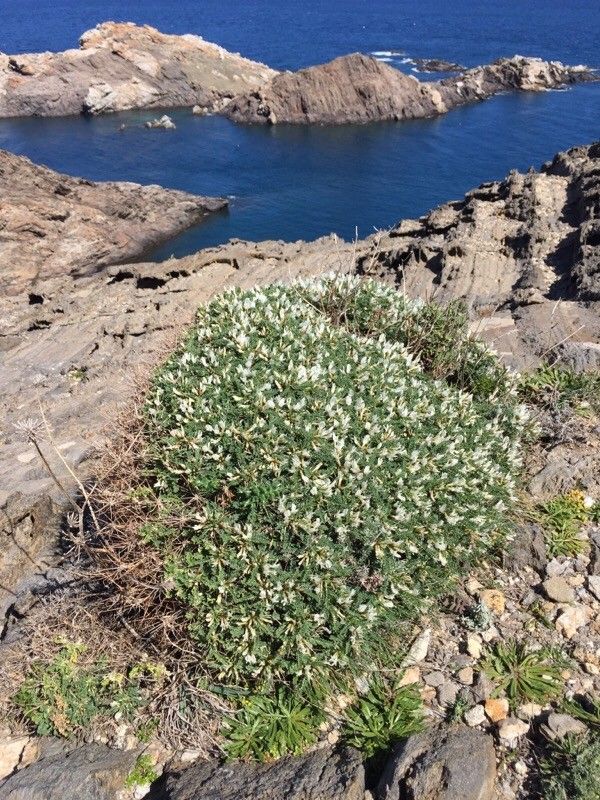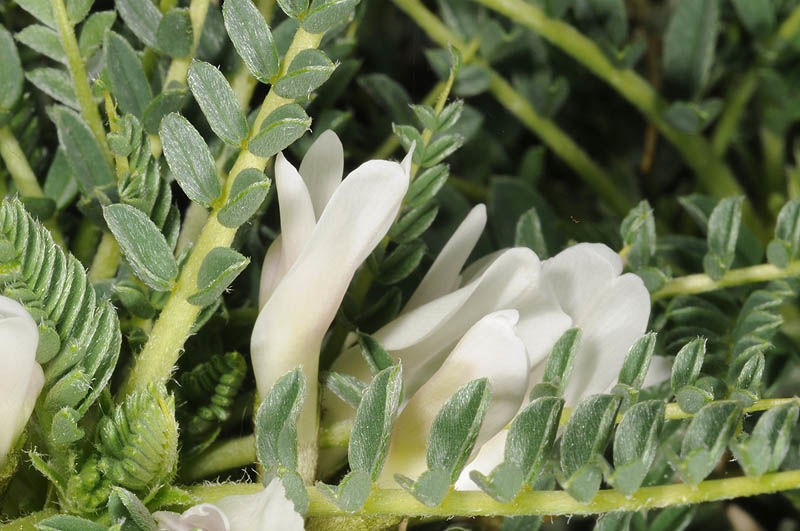Tragacanth Astragalus
astragalus tragacantha
Also known as: ["Tragacanth Gum Plant","Gum Tragacanth"]
Overview
A perennial herbaceous plant native to arid regions, known for producing gum tragacanth, a natural gum used in food and pharmaceutical industries.
Benefits & Perks
["drought tolerant","wildlife attractant (bees, butterflies, birds)","medicinal use"]
Botanical Classification
| Phylum: | Magnoliophyta |
| Class: | Magnoliopsida |
| Order: | Fabales |
| Family: | Fabaceae |
| Genus: | Astragalus |
| Botanical Name: | Astragalus tragacantha |
Plant Characteristics
Basic Information
- Category: Herbs & Weeds
- Suitable Location: rock garden, border, or xeriscaped area
- Suitable For:
- Is Weed: No
- Allergenicity: low
Environmental Needs
- Climate: {"temperatureRange":"–10–35°C"}
- Hardiness: {"zones":"4–8"}
- Misting: rarely required, only if ambient humidity is very low
- Drainage: Fast-draining to prevent waterlogging.
- Soil Type: Well-draining, loamy soil with added organic matter; suitable for rocky or sandy conditions.
Maintenance Level
- Maintenance Level: moderate
- Toughness Level: high
- Pruning Frequency: Annually in late winter or early spring before new growth begins.
- Pruning Intensity: Moderate; remove up to one-third of the plant if overgrown.
Care Details
Ideal Sunlight Coverage:
Full sun (6–8 hours of direct sunlight daily); tolerates partial shade in hot climates.
Sunlight Tolerance Tips:
Acclimate gradually to intense sunlight; protect from harsh afternoon sun in arid regions; ensure adequate ventilation if grown indoors.
Care Requirements
Care Difficulty
moderatemoderate
Sunlight
full sun to partial shade
Rotate plant weekly for even light exposure; use sheer curtains to filter intense sun; avoid sudden light changes.
Watering
every 7–10 days during active growth, reduce in winter
Allow soil to dry out between waterings; water thoroughly until excess drains; avoid overhead watering to prevent fungal issues.
Soil
well-draining, sandy loam with moderate organic content
pH: Slightly alkaline to neutral (pH 7.0–7.5).
Avoid heavy clay soils; ensure pots have drainage holes; amend with organic matter for nutrients.
Temperature
Prefers 60–75°F (15–24°C); tolerates cooler temperatures down to 40°F (4°C) but avoids frost.
Avoid sudden temperature fluctuations; protect from frost; ensure good air circulation.
Fertilizing
every 4–6 weeks during spring and summer
Fertilize only when actively growing; flush soil occasionally to prevent salt buildup; use a low-nitrogen formula for legumes.
Propagation
Methods
Stem cuttings or division of root clumps.
Step-by-Step Propagation Guide
- Take a 4–6 inch cutting.
- Remove lower leaves.
- Apply rooting hormone.
- Plant in medium.
- Keep moist and warm.
Best Time: Spring or early summer when the plant is actively growing.
Environment
Warm, humid environment with indirect light; maintain consistent moisture.
Medium
Well-draining potting mix with perlite or sand; can also root in water initially.
Hormone
Rooting hormone is recommended to improve success rates.
Timeline
Roots may develop in 3–6 weeks; new growth typically appears within 2–3 months.
Tools Needed
Pruning shears, rooting hormone, small pots, well-draining medium.
Quick Tips
Use healthy, non-flowering stems; maintain high humidity with a plastic cover; avoid direct sunlight.
Pruning & Repotting
Pruning Guide
Method
Selective thinning of branches; heading back to encourage denser growth.
Pruning Plan
Prune to maintain shape, encourage bushier growth, and remove dead or diseased parts.
Tools
Pruning shears, sterilizing solution, gloves.
Checklist
Sterilize tools; prune during dormancy; make clean cuts just above a node; dispose of clippings properly.
Repotting Guide
Best Season
Early spring before active growth starts.
Pot Size
Choose a pot one size larger (1–2 inches wider in diameter) than the current one.
Method
Remove plant gently; trim any circling roots; place in a new pot with fresh soil; water lightly after repotting.
Suggestions
Repot every 2–3 years or when roots fill the pot; beneficial for younger plants to encourage growth.
Checklist
Prepare new pot with drainage holes; use fresh, well-draining soil; handle roots carefully; water after repotting.
Advanced Care Tips
Watering Mastery
Watering Checklist
Check soil moisture with finger; water deeply; ensure drainage; adjust frequency seasonally.
How to Apply Water Properly
Water directly at the root zone, ensuring even moisture distribution; water until water drains from the bottom of the pot; ensure proper drainage to prevent waterlogging; water early in the morning to minimize evaporation and fungal growth.
Watering Schedule Tips
Water deeply once every 7–10 days during active growth in spring and summer; reduce frequency to every 3–4 weeks in fall and winter to prevent root rot.
Soil Improvement
Add perlite or coarse sand for drainage; incorporate compost for fertility; ensure soil is loose and airy.
Temperature Stress Management
Signs of Temperature Issues
Wilting, yellowing leaves, stunted growth, or leaf drop in extreme heat or cold.
Cold Stress
Slows growth, may cause leaf drop, and increases susceptibility to root rot if soil remains wet.
Solution: Move to a warmer location; protect from drafts; ensure soil is not overly moist.
Hot Stress
Leaves may scorch, wilt, or drop; growth may slow due to excessive transpiration.
Solution: Provide shade during peak heat; increase humidity; water more frequently but avoid waterlogging.
Fertilizing Guide
Fertilizing Checklist
Check growth phase; dilute fertilizer correctly; apply to moist soil; avoid contact with roots.
Fertilizing Method
Use a balanced, water-soluble fertilizer diluted to half strength every 4–6 weeks during spring and summer; avoid fertilizing in fall and winter.
Common Problems & Solutions
Toxicity Warning
Cats
Non-toxicAstragalus tragacantha is not considered toxic to cats. Ingestion of seeds may lead to mild gastrointestinal discomfort, but no significant toxic effects are documented.
⚠️ Symptoms:
🌿 Toxic Parts:
⚡ Toxic If:
if eaten
Dogs
Non-toxicAstragalus tragacantha is not considered toxic to dogs. The seeds may cause mild gastrointestinal upset if ingested in large amounts, but no severe toxic reactions are expected.
⚠️ Symptoms:
🌿 Toxic Parts:
⚡ Toxic If:
if eaten
Humans
Non-toxicAstragalus tragacantha is generally considered non-toxic to humans. However, ingestion of seeds in large quantities may cause mild gastrointestinal discomfort due to their high fiber content. No significant toxic effects have been documented in the literature.
⚠️ Symptoms:
🌿 Toxic Parts:
⚡ Toxic If:
if eaten
Frequently Asked Questions
Q: What is gum tragacanth used for?
A: Gum tragacanth is used as a thickening agent in food, cosmetics, and pharmaceuticals, and as a binder in traditional medicine.
Q: Is Astragalus tragacantha toxic to pets?
A: There is insufficient data on its toxicity to pets; caution is advised.
Q: How does Astragalus tragacantha adapt to arid conditions?
A: It has deep root systems and succulent-like leaves to store water, making it highly drought-tolerant.
Quick Reference
| Family: | Fabaceae |
| Care: | moderate |
| Light: | full sun to partial shade |
| Water: | every 7–10 days during activ |
Get Expert Care Tips
Download the Plantious app for personalized care reminders and plant identification!
Google Play App Store








